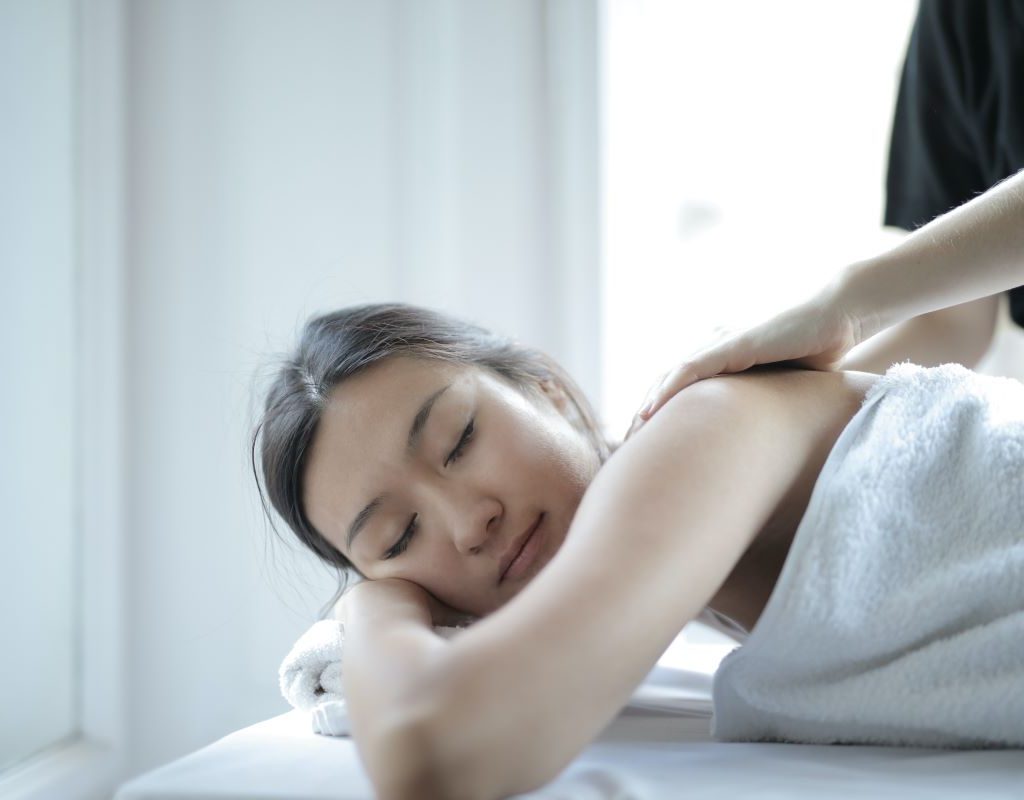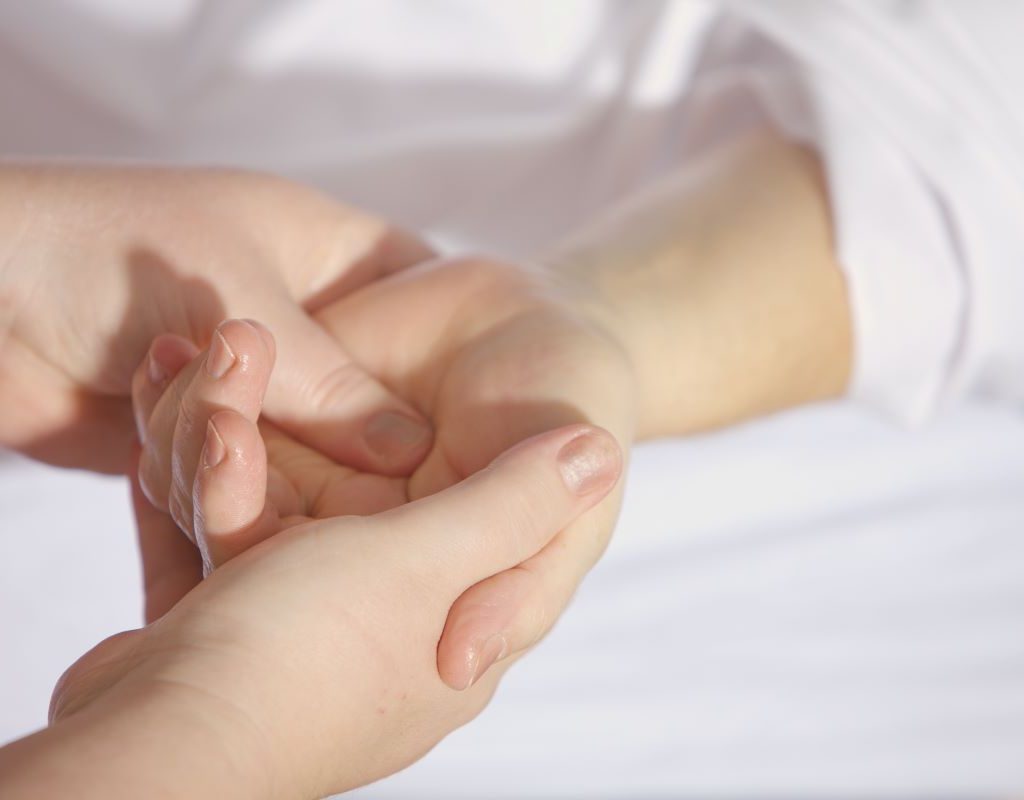Postpartum massage offers several benefits, like stress and pain relief, that you may have heard about. However, there are a few more advantages that you might not be aware of. Plus, if you have questions about the safety and timing aspects soon after giving birth, you’re not alone. How soon after giving birth can you get a massage? Is postpartum massage safe? What happens if you don’t massage your uterus after birth? We’ve explored some of those questions about postpartum massage along with its benefits to you and your baby during the first weeks after delivery.
How soon after giving birth can you get a massage?
As soon as you feel comfortable, you can get a postpartum massage. Whether you want to wait for a few days after giving birth or a couple of weeks, you’ll still receive the benefits from this therapeutic approach.
However, you might receive a word of caution from your obstetrician if you went through a caesarian section. He or she might advise you to wait at least six weeks to allow the incision to heal. After that waiting period has passed and if the healing is progressing normally, then you might be able to lie on your side if you’re getting a back massage. Another option is to lay on your back for a cranial or facial massage only.

Is postpartum massage safe?
The answer to the question of whether postpartum massage is safe depends on your overall health condition along with how smoothly your pregnancy and delivery went. If you did not experience any complications, then your doctor might give the green light for a massage. Also, if you’ve dealt with blood clots before, during, or after your pregnancy, or you know that you’re prone to getting blood clots, then you should avoid massage altogether. The pressure from the massage would likely loosen the clots and cause them to travel throughout the body which presents a hazardous situation.
In addition to talking with your doctor, you might consider a consultation with the licensed massage therapist who would welcome a visit and any questions you might have. This gives you the opportunity to check out the facility and its cleanliness (if your therapist doesn’t give the option of at-home massages) and to ask about the therapist’s credentials and methods, some of which include:
- The Jammu method which is designed specifically for postpartum recovery
- The Swedish method
- Acupressure
- Reflexology, which involves foot massage
- Myofascial, which is the massage of the larger muscle groups to relieve tension and soreness
- Craniosacral therapy, which lessens the pressure on the cranium, neck, and spinal column.
Likewise, the therapist will also have the chance to disclose whether they give postpartum massages since some practitioners might not be entirely comfortable with this practice.

Benefits of postpartum massage
Once you’ve established a working relationship with a licensed therapist, you’re all set for reaping the benefits that will facilitate, if not enhance, your postpartum recovery. Some of the positive effects of postpartum massage include the following.
Enhanced breastfeeding
Because postpartum massage puts the body in a more relaxed state, circulation improves, and as a result, your milk production increases. Furthermore, massage will boost your prolactin levels. Relaxation of your chest and shoulder muscles, in turn, will also increase milk production. Plus, you have the added benefit of muscles loosening up if you’ve been sitting or laying down in an uncomfortable position while nursing.
Relief of muscle soreness
Massage provides an excellent alternative to over-the-counter or prescribed medicines for muscle soreness. You’ll find relief of achy shoulders, neck, and back which often occur after delivery and during the first days of holding and feeding your baby or toting the carrier.
Reduction in swelling
Swelling in your ankles and feet is quite common after giving birth. Moreover, you might be dealing with bloating due to water retention which is another side effect. Postpartum massage restores your body’s fluid balance. Along with increasing circulation, a massage promotes the drainage of the lymph nodes which helps you to get rid of excess fluid and waste. Plus, the hormone regulation that’s brought about by massage also decreases swelling.
Regulation of hormones
As mentioned, postpartum massage takes stress away from the body and mind in a relaxing environment, thus allowing your body to regulate hormones more efficiently. In addition to balancing out these important biochemicals, massage also facilitates the release of endorphins which are the hormones responsible for the overall feeling of wellness.
Support for treating postpartum depression
With the dissipation of swelling, the ongoing balance of hormones, and a decrease in pain level, your risk for postpartum depression will be greatly mitigated. Also, undergoing a postpartum massage gives you time for self-care while someone else is caring for your child. This time is extremely important to your physical healing and emotional well-being. Plus, after this short break, you’ll return to your newfound role feeling recharged and ready to go.
Addresses discomfort from varicose veins and stretch marks
Additionally, postpartum massage helps with the discomfort that stems from varicose veins and stretch marks. In relation to varicose veins, however, your therapist would not necessarily massage the veins themselves. However, they might use reflexology or focus on massaging the larger muscle groups to relieve tension which will lessen the discomfort caused by varicose veins.
As for stretch marks, the increased circulation to an area of the body and redistribution of fluid combined with the “remodeling” of tissue makes scar tissue less visible over time. Thus, the stretch marks may not disappear entirely, but they won’t stand out as prominently as before. In addition to massage, some therapists might apply cocoa or shea butter, or avocado oil to diminish their appearance and hydrate the skin.
What happens if you don’t massage your uterus after birth?
Another type of massage that is vital to postpartum recovery is uterine massage which is administered by a nurse, the obstetrician, or other healthcare providers immediately after the placenta has been delivered. In fact, this form of massage is often standard practice to prevent hemorrhaging. The healthcare provider would massage your lower abdomen with small, clockwise, circular strokes. This will feel uncomfortable, but the massage is imperative to rid the uterus of lochia and blood clots. Plus, this form of postpartum massage will cause the uterus to gradually shrink back to its original state.
Also, one of these practitioners might show you how to do this type of massage once you go home. You would need to repeat the process every four hours until your discharge is pale. Another sign that you’re performing the massage correctly is a hardening and contracting of the uterus.
Final thoughts
As you can see, postpartum massage starts as soon as delivery day, but beyond your hospital stay, you can consult with a licensed therapist whenever you feel comfortable doing so. You might have to ask a few questions of your doctor and the therapist or wait longer if you went through a Caesarian section but incorporating postpartum mass into your recovery will yield positive results and get you back to your new normal in less time.


